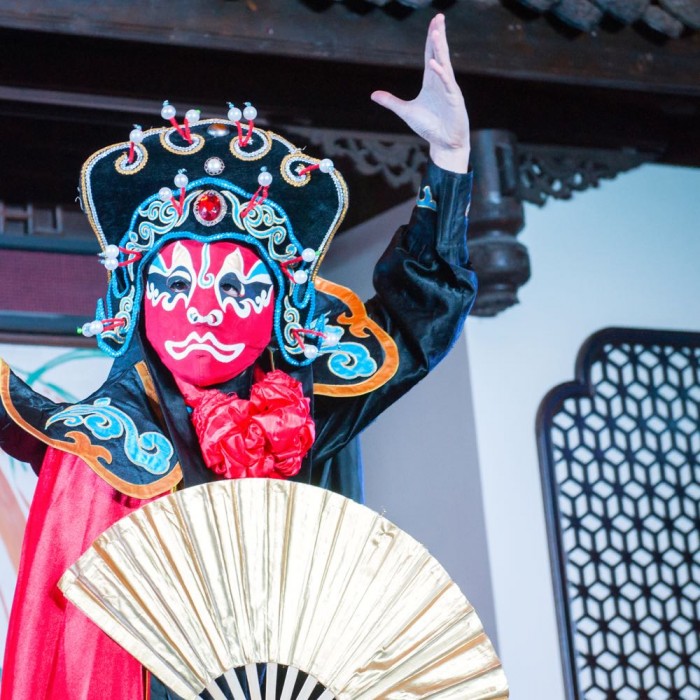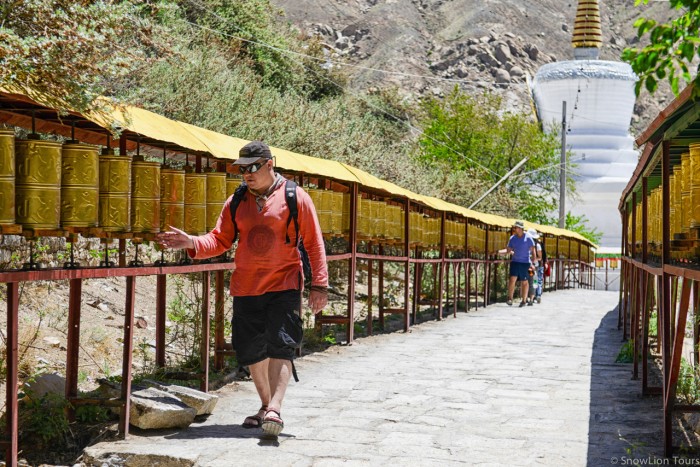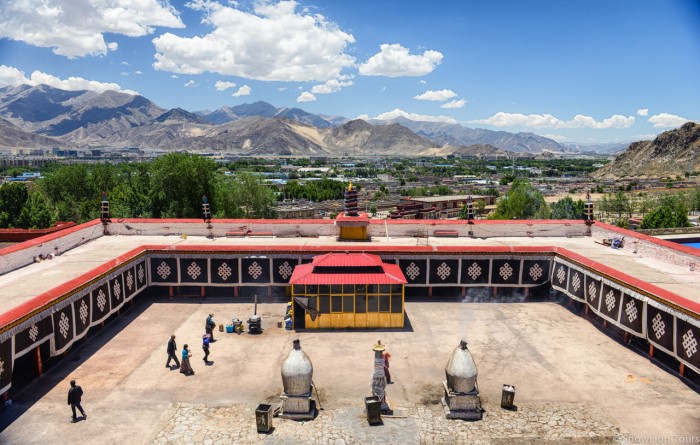Great Wall, Giant Panda to the old city of Lhasa
Explore the the modern capital city of China which is the political and Cultural center of China for many years and visit historic sites such as famous Great Wall, Forbidden City, Tiananmen Square, Temple of heaven, Beijing Lama Temple, Yiheyuan Summer Palace, then we will reach the to Chengdu which is a major city in the western China. Explore Chengdu City, Giant Panda, Three star piled Museum, Leshan Gian Buddha and of course the famous Sichuan cuisine and Face Change Sichuan Opera. Afterwards, you will take the once a life time journey to Lhasa, the capital city of Tibet Autonomous Region. In the sacred city of Lhasa, visit the grand Potala Palace, the holy Jokhang Temple, and the colorful Barkhor Square. Watch monks debate at Sera Monastery and join pilgrims in exploring the temples and prayer halls at Drepung Monastery and wondering around the Barkor street and drink some Tibetan sweet tea in a traditional tea house.
Highlights
- Beijing Great Wall, Forbidden City
- Sichuan Leshan Giant Buddha and Panda
- Holy city of Lhasa in Tibet
- Chinese and Tibetan Culture
Details
- 10-day trip begins in Beijing and ends Lhasa
- 9 nights in hotels
- Altitude from 600-3600m
Tour Costs
- E-mail us for an exact quote
- See Prices & Booking for more information
Departures
- open year-round
Day 1: Arrive Beijing International Airport.
Our guide will be waiting for you at the airport . After greeting and introduction, we will transfer you to the hotel in Beijing.
Day 2. Beijing Sightseeing
Highlights: Tian’anmen Square, Forbidden City and Summer Palace
After pick you up from your hotel in the morning, we will drive to our first stop of the day, the Tian’anmen Square which has been very well known both its modern political and cultural history. After walking across the square we will enter the Forbidden City, the world’s largest surviving palace complex and the former home of the emperors of the Ming and Qing Dynasty. The Forbidden City is one of the greatest attractions in the world. It was built by the third Ming emperor between 1406-1422 and served as the official residence and politic center to the Emperor of China until the last emperor, Puyi, was forced to evacuate in 1924. The Forbidden City is the best example of classical Chinese architecture in the world, and is one of the greatest wonders of the world. Afterwards, we will drive to Summer Palace. Having the largest royal park and being well preserved, the Summer Palace is ranked amongst the most noted and classical gardens of the world. In 1998, UNESCO listed it as one of the World Heritage Sites. Highlights not to be missed are climbing Longevity Hill, viewing the Empress Dowager Cixi’s extravagant Marble Boat, and talking a walk down Suzhou jie Street, a canal meant to resemble the beautiful river city of Suzhou. In the later afternoon, we will drive back to your hotel. Overnight in Beijing
Day 3. Beijing sightseeing
Highlights: The Famous Great Wall of China and Olympic Village
After pick you up from your hotel, we will drive outside of the city towards the Great wall at Mutianyu section. As one of the best-preserved parts of the Great Wall, the Mutianyu section of the Great Wall used to serve as the northern barrier defending the capital and the imperial tombs. Compared with other sections of Great Wall, the Mutianyu Great Wall possesses unique characteristics in its construction. Watchtowers are densely placed along this section of the Great Wall. Besides its strategically important location and compact layout, the Mutianyu Great Wall is also famous for the breath-taking scenery. The wall presents different aspects of beauty in the four seasons. Flowers bloom all over the mountains in spring. Grasses dress the hillside green in summer. Trees are laden with sweet fruits in autumn, and especially in October, leaves are turning red or yellow, touching the mountain tops with gold. In winter, the wall is covered by snow, making it seem more even more magnificent. While Mutianyu does get its fair share of visitors, it does not get as packed as Badaling, allowing you to have a peaceful time exploring the wall. After walking around on Mutianyu, you have the option of coming down via walking, taking a cable car, or taking a toboggan ride. (You are responsible paying for the fees if applied). Once you come down to the bottom of the mountain, we will have lunch at a local authentic Chinese restaurant. Afterwards, drive to the Olympic Village. The Olympic Green was the center of the event that captivated the world for two weeks in August of 2008. The highlights include the Bird’s Nest (officially known as the Beijing National stadium) and the Water Cube (the Beijing National Aquatics Center). The Bird’s Nest hosted the Opening and Closing Ceremonies, athletic events, and football final of the 2008 Summer Olympics, from 8 August to 24 August 2008. Since the Olympic end, the Bird’s Nest has been used to host events ranging from opera to a ski park during the winter season. After visiting the Olympic center, we will drive back to your hotel.
Day 4. Beijing sightseeing
Highlights: Temple of Heaven, Lama Temple and Hutong tour
Your guide will pick you up at your hotel and drive to Temple of Heaven. The complex was used as annual prayer ceremony site for having a good harvest by the emperors of Ming and Qing Dynasties. The tour inside Temple of Heaven will follow with the walking way of the emperors. You will see local people doing Taiji or ballroom dancing in the park. Afterwards, we will visit Lama Temple or Yonghe Temple which was built in 1694 and converted into a monastery in 1722. Today, the lama temple still functioning as a Tibetan Buddhist monastery. After lunch, we will conclude your tour with us by going to a Hutong Tour of old Beijing. You will go on this tour by rickshaw. Hutongs are courtyard homes chained together around narrow alleys, and served as the lifeline and center of everyday life in old Beijing. The hutongs were a critical component in the development and evolution of Beijing folklore and culture. While there are still hutong houses in the city, they are quickly disappearing due to the demands of a rapidly modernizing Beijing, so see the hutongs while you still can. After your tour of hutong and old Beijing we will return you to your hotel, thus completing your 3 day Beijing Tour.
Day 5: Beijing – Chengdu
Highlights: Chengdu Sanxingdui Museum (Three Star Pilled Museum) and Giant Panda Breeding Research Center
We will take an early flight to catch the day. Our local Chengdu guide will greet you at the Chengdu Shuangliu international airport and then we will drive to Giant Banda Research Center. From 8:30 – 9:00am every morning is the Panda’s breakfast time and the Panda Research center staff will feed the panda during this time. This is good time to see the cute pandas come out of their home. It is located about 10km away from downtown of Chengdu and takes about half hour or more to reach there. This Panda Research Center not only functioning as refuge land for the gentle animal but also studies their surviving skills including daily habits, food, activities, communication.etc. So they can increase the number of Giant Panda as there are only less than 1000 Giant Panda in the world and 80% of them located in Sichuan Province. Though it mainly research Giant Panda but it also offers as sanctuary for other animals such as Black necked crane, lesser pandas, white storks as well as other 20 species. Afterwards, we will drive to Sanxingdui Museum which located about 40km north of Chengdu. Three-Star Piles Museum is a cultural relic of the ancient Shu (Sichuan used to call Shu in the ancient times). The name of Three-Star Piles Museum or Sanxingdui Museum came from the three earth mounds at the site. The Relic area stretches for about 12 square kilometers (about 4.6 square miles). The relics in the Museum is the oldest and most well preserved cultural Site of Shu in Sichuan area. We will return back to Chengdu in the afternoon. Today we will have the famous Sichuan Cuisine food.
Day 6: Day trip to Sichuan Leshan Giant Buddha
We will pick you up at your hotel and then we drive about 150km and 2 hours to Leshan county from Chengdu. Once we get to Leshan Giant Buddha site, we will climb up to the mountain where you see Giant Buddha Statue, along the way, you can see some Buddhist Pagoda, waterfall, Temples. When you reach at the top, a panoramic view will be seen. Then follow the stair to visit the Leshan Giant Buddha. This is the one of largest stone carved Buddha statue in the world. Afterwards, return to Chengdu.
Day 7. Chengdu – Lhasa [3658m]
Welcome to Lhasa! Transfer to your hotel and get settled. Rest of the day for acclimatizing the high altitude. Walk around Lhasa street on your own.
Day 8. Lhasa sightseeing
Highlghts: Drepung Monastery, Nechung Temple and Sera Monastery
Visit Drepung, one of the three most famous monasteries in Lhasa. Drepung is located just outside Lhasa on Gambo Utse Mountain. Once home to as many as 10,000 monks, the enormous monastic complex is the site of many prayer halls, dormitories, and temples. Just below the monastery is the Nechung temple, the former home of the state oracle. Afterwards, visit Sera monastery, where you can watch monks debate in the courtyard. If you enjoy hiking, walk the hour-long circumambulation path around the monastery complex.
Day 9: Lhasa sightseeing:
Highlights: Potala Palace, Jokhang Temple, Dropenling Tibetan Handicrafts and Barkhor street
In the morning, visit the Potala Palace, the greatest monumental structure in all of Tibet. The Potala is 13 stories high and holds countless treasures in its many rooms. Built in 637 AD, the Potala has been home to the Dalai Lama lineage for more than a thousand years. Also visit the Jokhang Temple, the holiest temple in all of Tibet. From the rooftop you will see pilgrims from all over Tibet prostrating in front to the Jowo Buddha statue inside the monastery. Afterwards, we will visit to the Dropenling handicrafts Shop which is a Tibetan owned social enterprises aim to serve Tibetan Artisans and support their families. Once we come back to Barkhor street, we will walk through the Barkhor, a famous shopping street filled with goods and souvenirs from Tibet, Nepal, and India. Spend some time drinking sweet tea in a traditional tea house located on a rooftop overlooking the bustling Barkhor.
Day 10. Depart from Lhasa to Beijing (if you have fly back home in other cities, we can also arrange according to your international flight)
Say goodbye to China!














